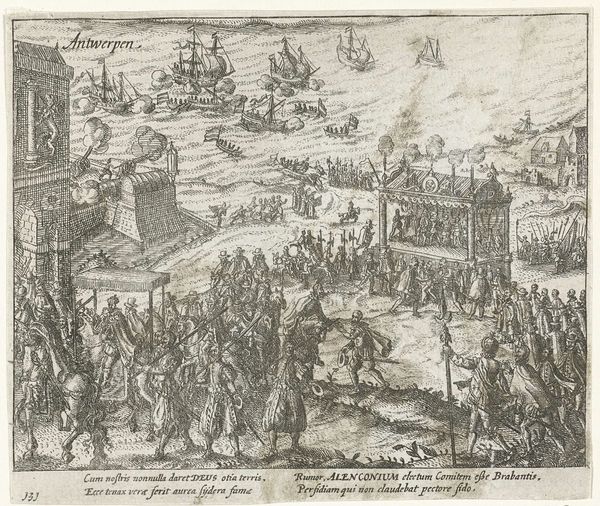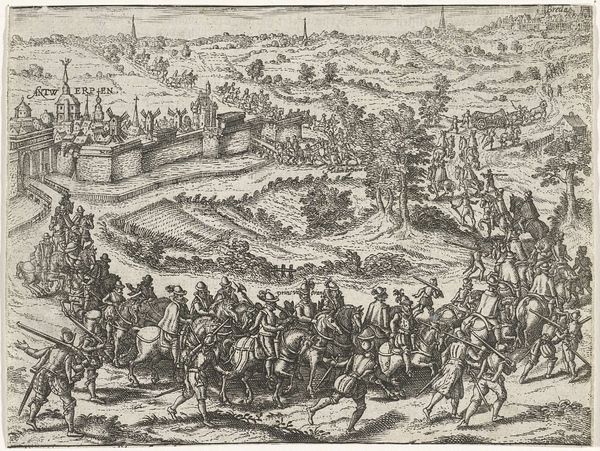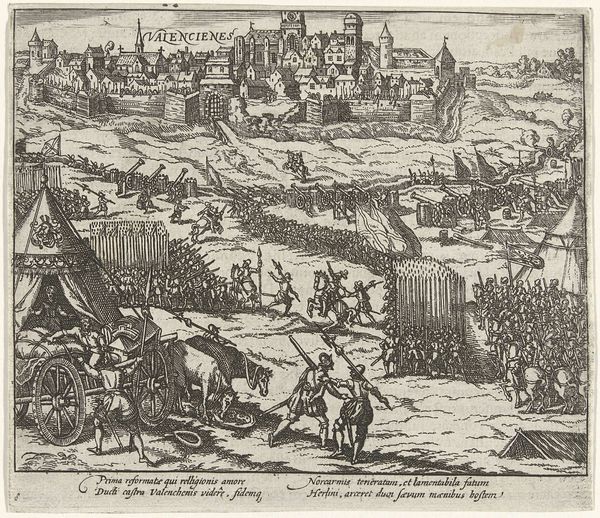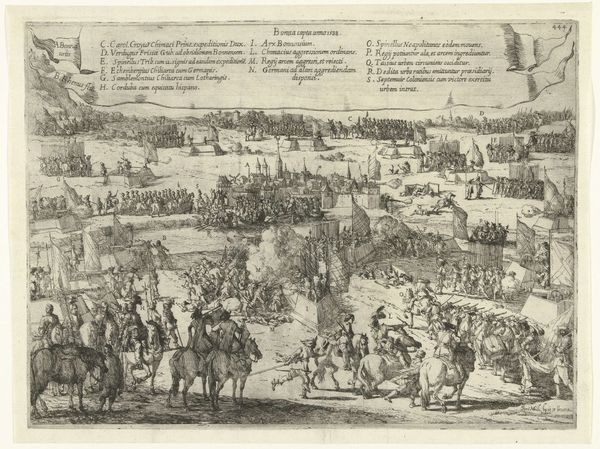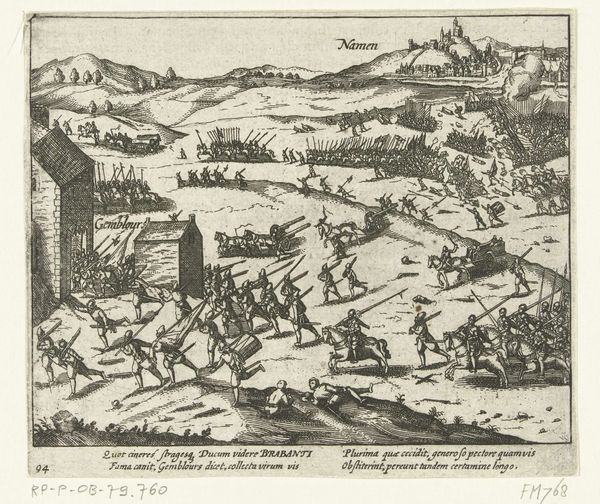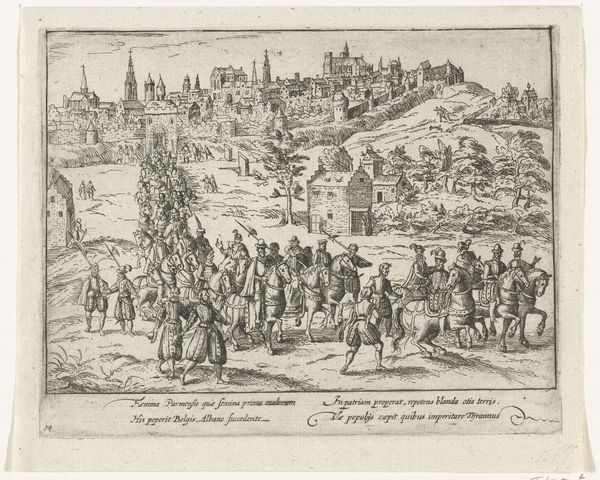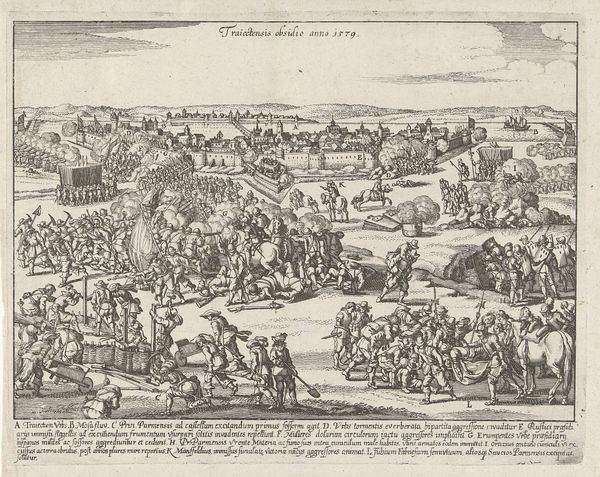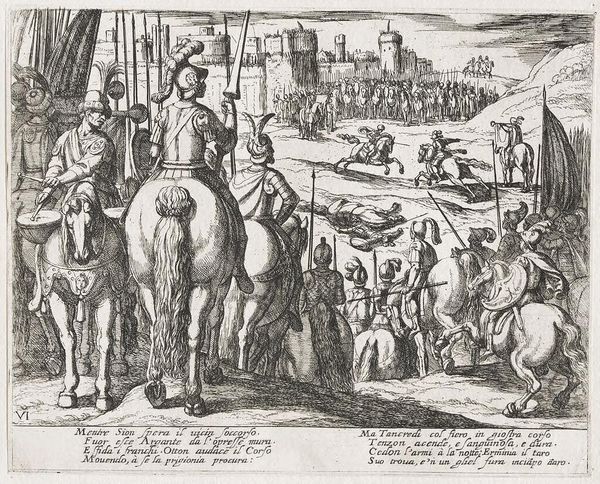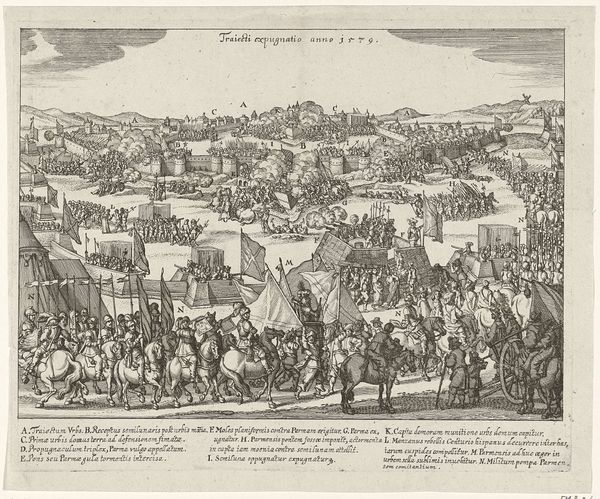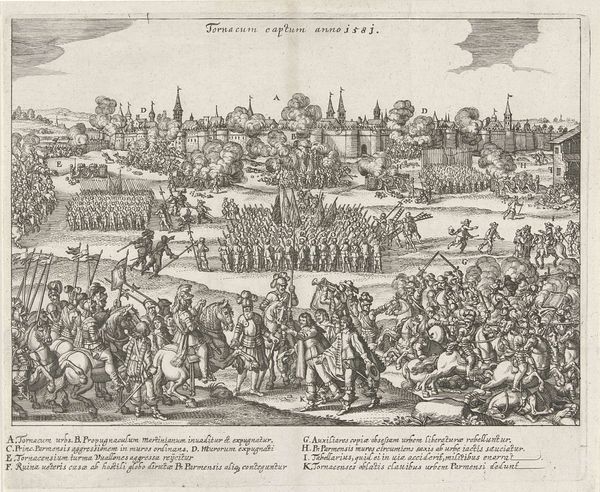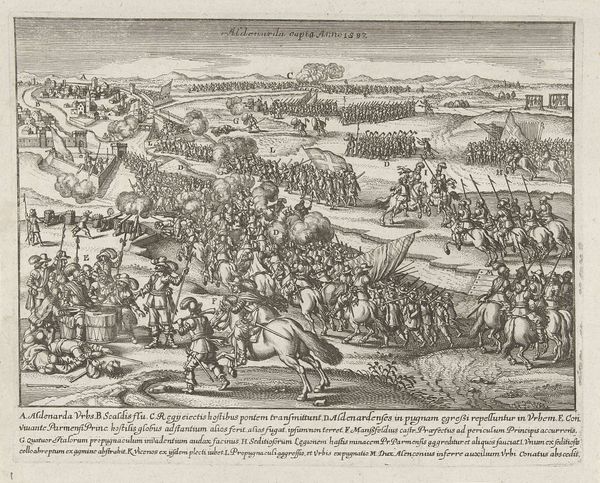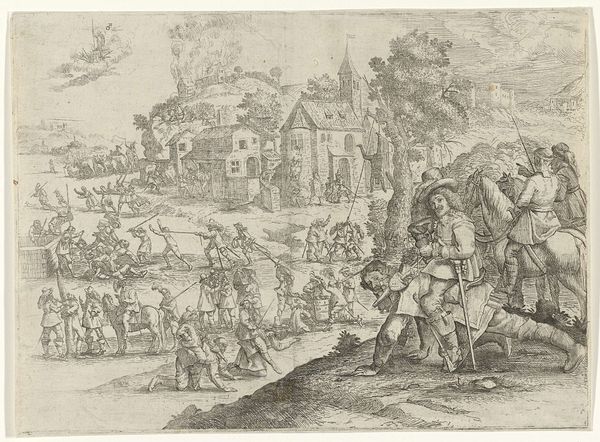
drawing, print, ink, engraving
#
drawing
#
narrative-art
#
pen drawing
# print
#
landscape
#
ink
#
history-painting
#
engraving
Dimensions: height 139 mm, width 175 mm
Copyright: Rijks Museum: Open Domain
Editor: We're looking at "Arrival of the Duke of Alva in Brussels, 1567," an engraving from around 1613-1615. It's incredibly detailed. The sheer density of figures creates a striking visual effect. What stands out to you? Curator: Immediately, the composition seizes my attention. Observe how the artist organizes the space. We have a foreground teeming with activity that gradually recedes into a more sparse background, defined by regimented clusters of soldiers. This deliberate recession, created through careful linework and perspective, establishes a clear visual hierarchy, does it not? Editor: I see what you mean. The lines do seem to pull the eye back. Curator: Precisely. Notice, too, how the use of hatching and cross-hatching delineates form and texture. The artist has achieved a remarkable tonal range using only ink. Are there any specific motifs that attract your eye? Editor: Well, I’m drawn to the figures running in the foreground, and that cute dog! It gives a sense of movement in contrast to the more static groups. But also how they're depicted as quite small compared to others further away, with very detailed rendering and perspective. It’s interesting how they managed that. Curator: Yes! These figures effectively underscore the arrival, emphasizing the contrast between action and imposed order. Consider how this reflects anxieties present during that period? Ultimately, the drawing showcases skill in using graphic means to organize intricate spatial relationships, regardless of its historical implications. Editor: That's a fascinating way to look at it. Thanks! Curator: A worthy analysis! Thank you for pointing that out.
Comments
No comments
Be the first to comment and join the conversation on the ultimate creative platform.
